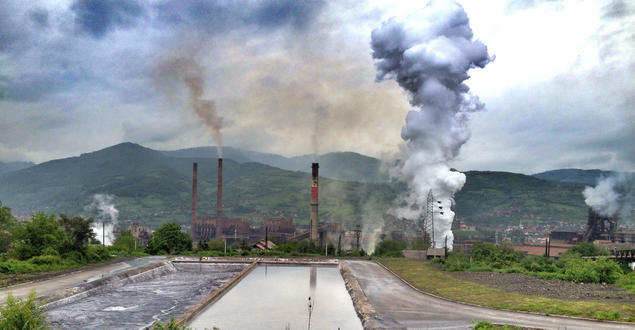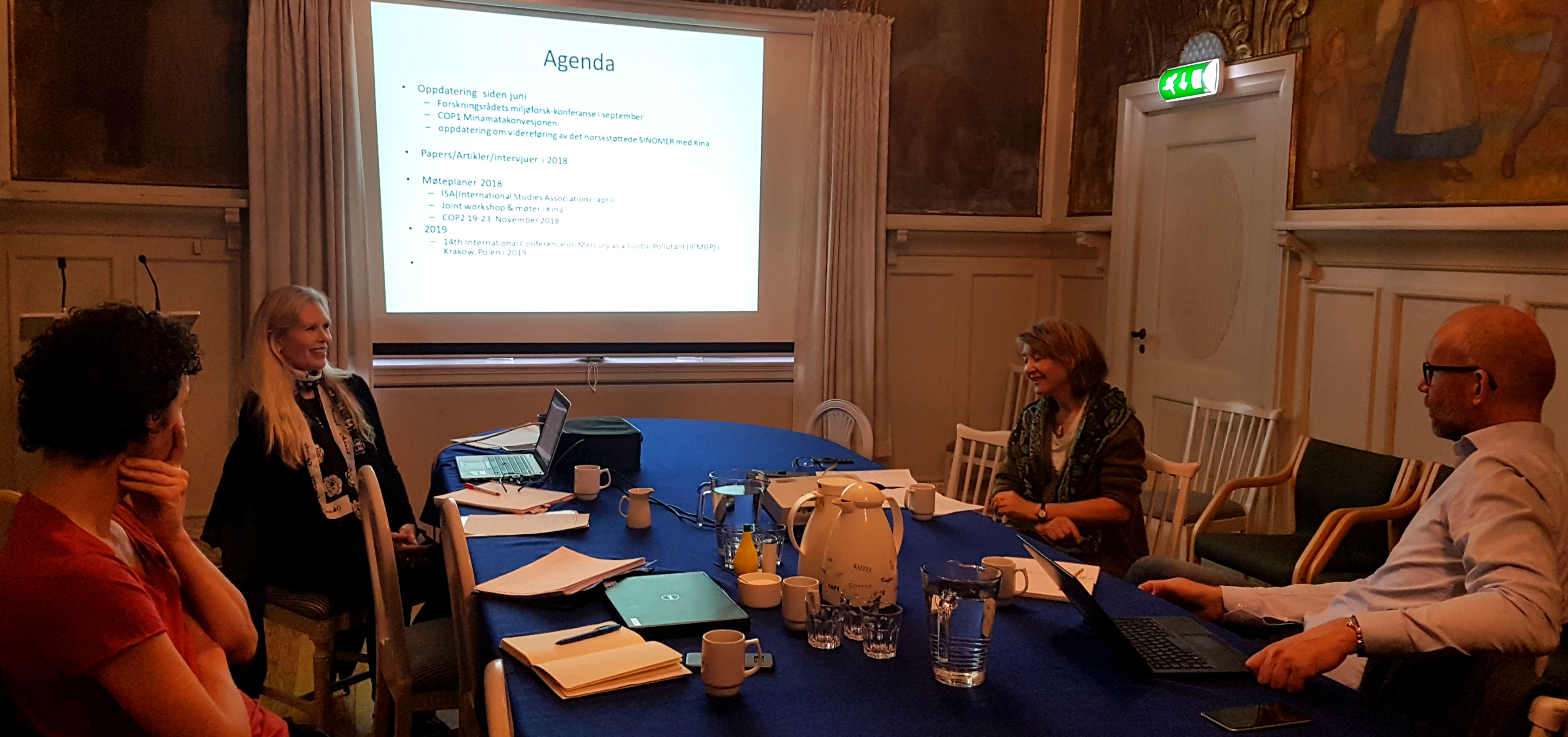Mercury on the agenda

A meeting was held between the Fridtjof Nansen Institute and NIVA for the research project ‘Managing mercury through multilevel governance: Norway and China’ (MERCHINOR), funded by the Research Council of Norway. Other key partners (not present) are Peking University and Tsinghua University.
Mercury is a naturally occurring element that is used in certain products and industrial processes, as well as emitted unintentional to air by industrial activities such as coal burning. To deal with the issue globally the Minamata Convention was adopted on 10 October 2013 and entered into force on 16 August 2017. The first Conference of the Parties (COP1) to the Minamata Convention on Mercury took place from 24–29 September 2017 in Geneva, Switzerland. The Convention bans new and phases out existing mercury mines, contains measures to control air emissions and releases to land and water, and regulates the informal sector of artisanal and small-scale gold mining. This was the first COP for a new environmental convention in 12 years, and there was ground for celebration and optimism.

Relevant read:Summary of the First Convention of the Parties to the Minamata Convention on Mercury
Progress, but challenges remain
Eirik Hovland Steindal, NIVA, who participated in COP1, commented on the negotiations, saying:
‘There was progress in many areas such as with regard to reaching agreement on the technical elements, yet discussions on the organizational processes were difficult. For instance the permanent arrangements of the Minamata Convention Secretariat and the degree of integration with the Secretariats of the Basel-, Rotterdam- and Stockholm Convention was left unresolved and will have to be revisited at COP2 in 2018. The Secretariat is currently based in Geneva, which is an interim agreement. More surprisingly perhaps, was that no consensus could be reached on the Memorandum of Understanding between the COP and the GEF. As a result, the matter was deferred to COP2, and the GEF may not serve as a financial mechanism until this is resolved.’
Kristin Rosendal, FNI, further underscored the challenges of negotiations  and the roles and interests of different stakeholders when international environmental agreements such as the Minamata Convention enter the implementation phase.
and the roles and interests of different stakeholders when international environmental agreements such as the Minamata Convention enter the implementation phase.
‘An important focus of the ongoing MERCHINOR project is the science–policy nexus and the importance of states having a sense of ownership to the knowledge produced as a basis for implementation’, Rosendal continued.
The role of China
One of the key countries in addressing the mercury issue is China. China has undergone a major shift in its position on dealing with mercury as an environmental problem over the last decade, from almost ignoring the issue 10 years ago, to being an active player in the Minamata negotiations and having the issue high on the domestic agenda today. In China, mercury is released from many industrial processes (coal-fired power generation, mining, non-ferrous metal smelting, cement, etc.) and is used in the production of numerous manufactured products (PVC, medical devices, compact fluorescent lights, batteries, dental fillings, etc.).
Norway was one of the first countries to initiate bilateral collaboration with China on mercury, and carried out a ten-year bilateral cooperation on the mercury issue. China is the largest exporter of mercury emissions and it makes sense to target China as a main focal point for Norwegian interests and priorities in this regard.
Instrumental collaboration
Thorjørn Larssen, NIVA, emphasized the significance of the bilateral mercury collaboration between Norway and China stating:
‘The bilateral collaboration has been instrumental in setting mercury on the agenda in China, and has contributed to growing awareness of the issue. However, ratification of the Convention is not the end of mercury, it is rather a first step towards the end. China is facing a tremendous challenge when implementing the Convention. Thousands of industrial plants will in the coming years have to adapt to the new regulatory framework. Enforcement and monitoring will be key to safeguard concrete reduction. In fact, the Convention requires Parties to collaborate internationally to tackle mercury pollution and NIVA intends to continue the important technical implementation support we are currently providing the Chinese authorities.’
By ratifying the Convention China intends to develop a national implementation plan (NIP). The NIP will illustrate status and achievements so far in the mercury area and define what the plans are to fulfill the requirements of the Convention.
Gørild Heggelund, FNI, stated:
‘As China now enters the implementation stage of the Minamata Convention, it is important to look into how domestic management in China is developing, and to identify what are barriers and opportunities for implementation of the NIP; we are also looking at how this relates to foreign policy and the negotiations of the mercury issue. The ongoing research project will analyze these matters as well as look into achievements and draw lessons from the ten-year bilateral cooperation on mercury.’
